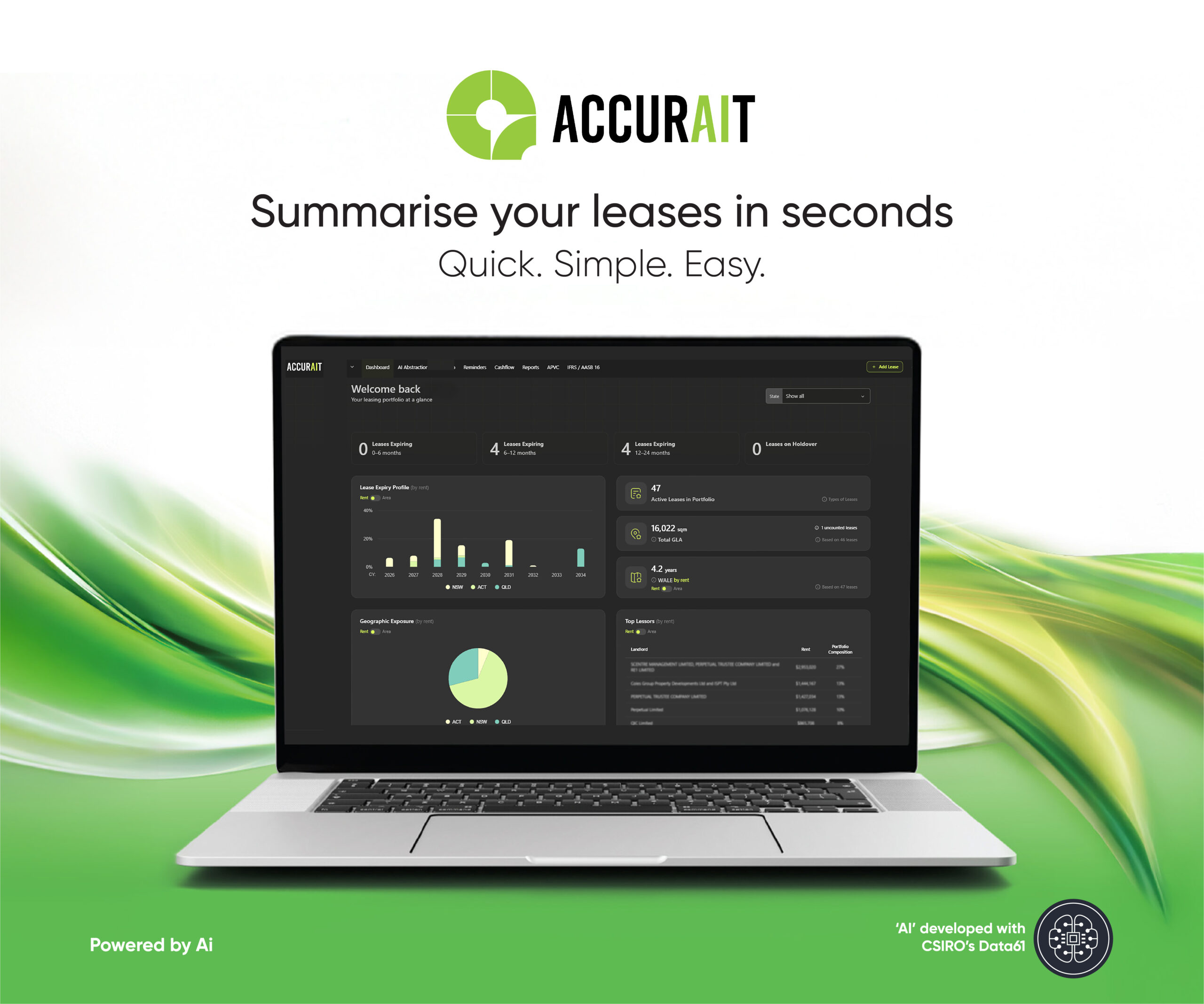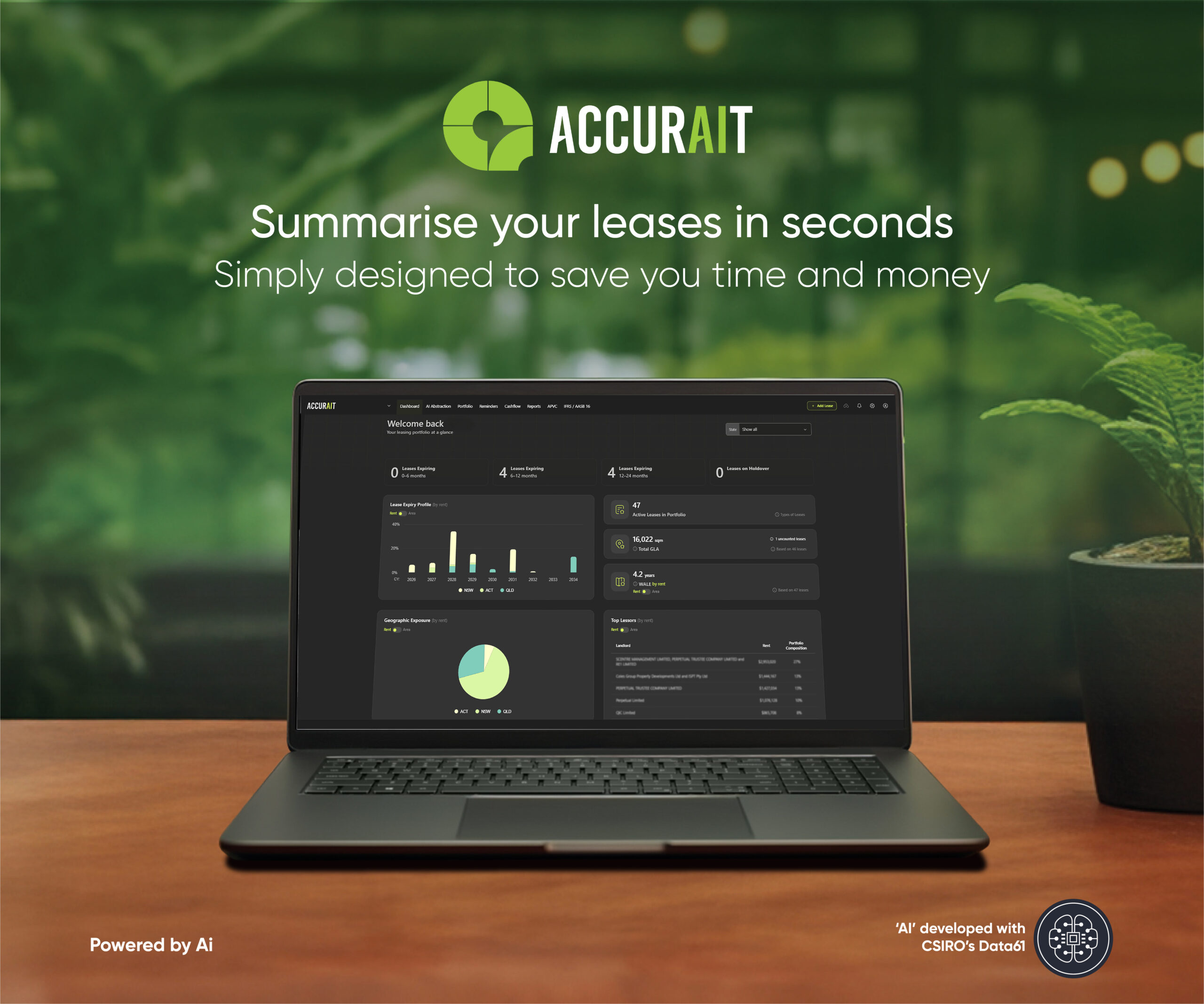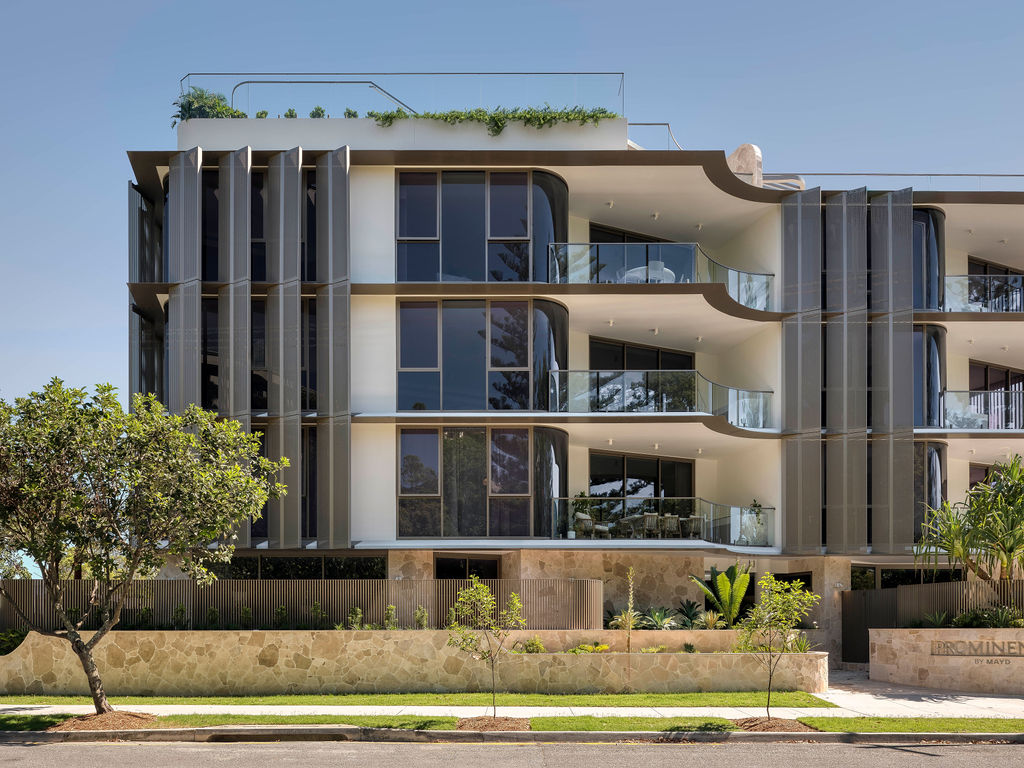
Australia’s property markets are entering a new phase of cautious optimism and regionally diverse momentum as 2025 unfolds, according to the latest PIPA National Market Update.
This report pulls together insights and analysis from market experts and PIPA members from the latest edition of the PIPA Adviser e-magazine’s national market update.
PIPA Chair Cate Bakos said buyer confidence is returning across the country following a period of interest rate cuts and the rollout of enhanced government incentives
“While affordability remains a key constraint, especially in capital cities, lifestyle appeal, infrastructure investment, and structural undersupply are driving renewed activity in both metropolitan and regional areas,” Ms Bakos said.
In New South Wales, Sydney’s market is showing signs of a measured recovery, with dwelling values rising 4.2% since the February rate cut.
Demand is strongest in affordable, family-friendly areas like St Marys and Mount Druitt, while regional centres such as Newcastle and the Hunter Valley continue to benefit from lifestyle migration and infrastructure improvements, she said.
“Victoria’s property landscape is underpinned by a rebound in buyer activity, especially in Melbourne’s outer suburbs where competition is fierce in the sub$950,000 bracket,” she said.
“While overall values remain slightly below their 2022 peak, momentum is building across price segments. Regional Victoria continues to attract buyers with its affordability and long-term growth, supported by strong fundamentals and digital accessibility for interstate investors.”
Queensland is experiencing a surge in buyer activity, particularly in southeast regions like Ipswich and Toowoomba, where open homes are drawing large crowds and properties are selling rapidly, often above asking price.
“Despite new seller disclosure requirements initially slowing listings, the market is now adjusting, with well-prepared buyers best positioned to succeed,” Ms Bakos said.
“Perth’s market remains one of the nation’s strongest, underpinned by population growth, a resilient economy, and government-backed deposit schemes.
“With listings at historic lows and land sales surging, upward price pressure is expected to build.”
Meanwhile, Adelaide continues its remarkable run, with sales volumes and prices climbing steadily, particularly in affordable northern suburbs and lifestyle-driven regional hubs like Victor Harbor and Moonta Bay, she said.
“Tasmania and the ACT are also showing renewed strength. Tasmania’s market has been reinvigorated by the 5% deposit scheme and major renewable infrastructure projects, while Canberra is stabilising after a quieter 2024, with moderate growth forecast into 2026,” Ms Bakos said.
“Across the board, the national property outlook is one of steady, sustainable growth – shaped by affordability, infrastructure, and the enduring appeal of lifestyle-led living.”
NEW SOUTH WALES
Michael Safar, Director & QPIA, SAFORE
“The New South Wales property market has entered a period of steady adjustment in 2025, shaped by affordability pressures, lifestyle-driven demand, and renewed confidence following recent rate cuts.
“Across Sydney and key regional centres, activity is rebuilding as low vacancy rates, resilient demand, and supportive policy settings form the foundation for measured growth.
“Sydney’s market continues to recalibrate, with selective demand driving activity across distinct pockets. Since the first rate cut in February, dwelling values have risen by around 4.2 per cent, reflecting a measured recovery supported by renewed confidence and tight supply.
“Demand remains strongest for quality, well-located homes near established amenities and lifestyle centres, while affordability continues to shape buyer behaviour and temper activity in higher-value markets.
“Among Sydney’s top-performing SA3 regions, St Marys and Mount Druitt each recorded annual growth of about 7.5 per cent, underscoring the strength of familyoriented, affordable precincts.
“With subdued construction and fewer new listings, tight stock levels persist. This imbalance, combined with persistently low rental vacancies, points to ongoing structural challenges that will require time and coordinated policy effort to resolve.
“Beyond the capital, regional NSW continues to evolve as a lifestyle-led market. Enhanced transport links, local job growth, and affordability are attracting new residents seeking balance beyond Sydney.
“Vacancy rates in centres such as Newcastle, Wollongong, and the Central Coast remain below one per cent, reflecting strong demand and limited supply. Hunter Valley and Tamworth again rank among the state’s top-performing SA3 regions for annual value growth, reinforcing their role as consistent performers in a more stable regional cycle.
“Migration, infrastructure, and affordability are shaping regional markets less by short-term momentum and more by long-term fundamentals.
“Recent policy shifts have added new dynamics to the market. The expansion of the First Home Guarantee price caps from 1 October 2025, now $1.5 million in Sydney and major regional centres and $800,000 in other NSW areas, has widened access for first-home buyers.
“While this may stimulate demand in Sydney’s middle-ring and growth-corridor suburbs, affordability remains a defining challenge as population growth and limited new housing continue to outpace supply.
“Looking ahead, NSW’s property market appears positioned for steady, sustainable growth through 2026, supported by confidence, infrastructure investment, and the lasting appeal of lifestyle and liveability.
“For investors, success will lie in aligning strategy with enduring long-term fundamentals and targeting markets underpinned by affordability, employment access, and constrained supply.”
VICTORIA
Dr Jenny Jia, Director & QPIA, JL Property Buyers Agent
“According to Cotality data as of 1 October, Melbourne’s dwelling values remain 2.7% below its 2022 peak. However, headline numbers such as these often disguise the diversity of market conditions across the city.
“Although prices are still below the previous high, the market has been gradually regaining momentum since early this year. With three rate cuts improving borrowing power, more buyers have returned to the market with improved sentiments. The early rollout of the First Home Guarantee has also added momentum.
“In Melbourne’s outer east, northeast, and northwest, activity has been particularly strong. Many properties are selling before being listed, or during the first week of a campaign, or ahead of auction, with both clearance rates and sale premiums rising, reflecting a clear seller’s market. Over the past five years, prices in some of these areas have climbed by 30% to 50%.
“In the sub-$950,000 range, competition is intense between first home buyers and investors, including a growing share of interstate purchasers. The wider use of online inspections and digital property-matching tools has made cross-state buying far easier.
“Even so, investors need to understand the context behind data rather than simply assuming past growth will continue and be cautious of herd behaviour that can lead to sudden price surges. Markets dominated by investors tend to be more volatile as their decisions are often more sensitive to interest rate changes and short-term conditions than those of owner-occupiers.
“Momentum is now shifting upward from the entry level to the mid-market. Activity has strengthened, notably below the $2 million mark, and competition has become more widespread.
“In the $3 million to $6 million segment, conditions are stable, suggesting a market that remains broadly balanced yet leans slightly towards sellers.
“At the top end, particularly in Toorak, turnover remains subdued — reflecting both the limited supply of quality properties and the impact of recent changes to investment migration policies on buyer demand.
“Over the past 12 months, the number of detached house sales has fallen to roughly half the level recorded a decade ago. Yet, when top-tier homes do come to market, competition is still fierce.
“The unit sector continues to recover more slowly than the detached housing market, which is a typical pattern in price cycles where premium assets tend to lead in both timing and magnitude of growth.
“In regional Victoria, activity remains firm thanks to pricing and resultant affordability advantages. While the regional dwelling values are still 4.6% below its 2022 peak, long-term growth has been impressive: up 34.8% over five years and 3.2% in the past year, supported by ongoing affordability and lifestyle demand.
“All in all, Victoria’s property market is full of opportunity. Among the capital cities, Melbourne’s relatively strong value stands out clearly. In recent years, as many investors have stepped back and more owner-occupiers have entered the market, its foundations have become stronger and more stable.
“Regardless of how interest rate cuts unfold, Victoria appears well-positioned to remain on the radar of long-term investors.”
QUEENSLAND
Melinda Granzien, Director, Buyers Agent & QPIA, Precision Property Buyers
“Buyer activity has accelerated across Southeast Queensland in recent weeks, coinciding with the launch of the new First Home Buyer incentives on 1 October. Open homes in our local regions such as Ipswich, Lockyer Valley, Toowoomba, and the Scenic Rim are drawing 30 to 40 groups at a time, with many properties attracting multiple offers and selling quickly.
“In some cases, buyers are even submitting offers sight unseen in an attempt to secure a property in these highly competitive conditions.
“Agents are being inundated with enquiry, which is making it increasingly difficult for genuine buyers to have their questions answered or to view properties in detail. For this reason, we are inspecting properties outside of open homes wherever possible to ensure our clients can complete thorough due diligence before making a decision.
“The introduction of the enhanced First Home Guarantee package has sparked a noticeable increase in enquiry, particularly in the entry-level market where properties fall within the eligibility thresholds.
“Many buyers who had been sitting on the sidelines are now stepping into the market with more confidence. While this is positive for first-time buyers, the flow-on effect is tighter competition and additional upward pressure on prices in already competitive markets.
“Well-presented homes are attracting the strongest demand, with price growth continuing month-on-month. Buyers are often offering well above market value and significantly over the list price — sometimes $50,000 to $100,000 more — just to secure a property.
“Agents are commenting that they “cannot believe” the prices being achieved, with many properties selling after just one open home and minimal marketing. Multiple offers well above asking price are now the norm!
“Looking ahead, buyer activity is expected to increase even further as more first home buyers take advantage of the new incentives, adding to competition not only among first-time purchasers but also among investors and upgraders competing in the same price brackets.
“Initially, the introduction of the new seller disclosure requirements (Form 2) caused delays in listings and contract signings, but we are now seeing more vendors actively completing this disclosure before going to market — a positive shift that is helping to streamline the process.
“With demand showing no signs of easing, buyers who act decisively and are wellprepared will be best placed to succeed in this fast-moving market. However, regardless of how strong or ‘clean’ an offer may be in terms of conditions, vendors are ultimately being influenced by price.
“In the current climate, the highest offer — not necessarily the most favourable terms — is often what secures the property.”
WESTERN AUSTRALIA
Andrew Black, Director & QPIA, Fundamental Invest
“The Perth property market is experiencing robust growth, further fuelled by the
Federal Government’s recent 5% deposit scheme, which eliminates Lenders Mortgage Insurance (LMI). This initiative has intensified demand in a market already facing significant constraints.
“Recent data from the Real Estate Institute of Western Australia reveals that only 2,779 properties are listed for sale, comprising 1,725 houses, 636 units, and 418 blocks of land. This marks a 6% decrease from four weeks ago when there were 2,941 properties available.
“Notably, this time last year, Perth had 65% more properties for sale, totalling 4,588. For context, a balanced market in Perth typically features 12,000 to 13,000 properties for sale – levels not seen since 2019.
“For the third consecutive year, Perth has recorded the highest percentage population increase in Australia, driven by a thriving economy, particularly in the mining sector. Strong commodity prices continue to generate numerous opportunities, attracting workers from across the nation and internationally.
“The rental vacancy rate in the metro area appears to have stabilised at 2.1%, up from 1.6% a year ago and less than 1% two years prior. However, some regional centres are facing critically low rental stock levels, with several key areas reporting vacancies below 1%.
“Perth’s land sales have led the nation, achieving a near-record quarter with a remarkable 45% increase in sales year on year. Despite this surge in activity, prices have remained stable, although approximately 35% of trading estates currently have no available stock. This pent-up demand is likely to result in upward price movements in future releases.
“Recent data from the Australian Bureau of Statistics (ABS) indicates that Western Australia is leading the nation with a 25% year-on-year increase in housing starts, alongside a steady pace of completions.
“This is a significant outcome for an industry that has faced considerable pressure. While detached dwellings are seeing strong starts, higher construction costs have subdued activity in the apartment sector, which remains concentrated in premium areas where feasibility is more favourable.
“Builders who have effectively managed their project pipelines are well-positioned to capitalise on the sustained strong demand over the next two to three years and beyond.
“In particular, Defence Housing contracts have garnered significant interest from investors, following recent announcements from the State and Federal Governments regarding the AUSKUS base slated for Perth.
“Overall, the outlook remains very positive for Perth and key regional centres.”
SOUTH AUSTRALIA
Terry Ryder, Director, Hotspotting
“The Adelaide market continues to defy gravity and remains one of the nation’s sturdiest property markets.
“Our analysis shows that total residential sales in the latest quarter represented a 19% rise on the previous quarter – and were 24% higher than the same period in 2024.
“After five years of notable growth in activity and prices, Adelaide continues to rise. The latest price data shows the median house price is 9% higher than a year ago and the median unit price has grown 10% – close to the best in the nation.
The price growth has occurred in response to continuing strong sales activity across the Adelaide market.
“Quarterly sales across Greater Adelaide in the past 18 months have been steadily rising – with over 8,400 sales in the latest quarter, compared 6,700 a year ago. The affordable northern suburbs have been very much at the forefront of the Adelaide boom and the LGAs of Playford and Salisbury remain prominent.
“Of the 19 markets in Playford, 15 have positive trends and sales activity continues to rise, led by Elizabeth Downs, Elizabeth North, Munno Para West, Blakeview and Davoren Park. Neighbouring Salisbury is also busy, led by suburbs with rising sales activity including Ingle Farm, Valley View, Salisbury North, Parafield Gardens and Mawson Lakes.
“The Tea Tree Gully LGA continues to excel – quarterly sales over the past 18 months have risen from below 300 to almost 500 – led by rising markets such as Dernancourt, Fairview Park and Greenwith.
“The Port Adelaide Enfield LGA is particularly strong at the moment – 20 of the 29 markets in our recent analysis have positive trends with their sales activity and total sales for the LGA rose 34% in the latest quarter. Leading suburbs include Klemzig, Lightsview and Enfield.
“Regional South Australia delivered a 12% year-on-year increase in sales, with 58% of its markets now on the rise.
“Quarterly volumes have held near their December 2024 peak, reinforcing a steady recovery.
“Alexandrina and Victor Harbor LGAs remain solid performers, while the Copper Coast’s Moonta Bay and Wallaroo have emerged as rising hotspots. Port Pirie is also notable for its low-price, high-yield profile.
“Moonta Bay’s and Wallaroo’s surging sales illustrate how lifestyle-driven coastal markets can outpace traditional regional centres.
“Port Pirie’s affordability is also continuing to attract yield-focused investors.”
TASMANIA
Sam Spilsbury, Director, Buyers Agents Tasmania
“Tasmania’s property market has been showing a steady pulse through 2025. Statewide house sales lifted 11% for the quarter, up 3.5% year-on-year, while the median house price held firm at $610,000, sitting 1.7% higher than a year ago.
“Since the 5% deposit scheme came into effect on 1 October, capped at $600,000 in Hobart and $550,000 across the rest of Tasmania, activity has spiked dramatically.
“Properties in this bracket are drawing 30 or more groups through open homes and attracting up to 15 offers — reminiscent of the competitive conditions of 2021–22. Many of these buyers are first-home purchasers, eager to take advantage of the scheme before limited allocations are filled, adding urgency to the market.
“Investors are also re-emerging, particularly in the North-West and outer Hobart suburbs, where yields remain among the most attractive in the country. The statewide median rent increased 4.2% for houses and 5% for units year-on-year, with the median rental now sitting at $495 per week for houses and $420 for other dwellings. With vacancy rates still tight, investors are finding renewed confidence in stable rental performance and improving buyer sentiment.
“Beyond market fundamentals, Tasmania’s infrastructure pipeline is expanding rapidly, reinforcing long-term growth confidence. In October 2025, the State Government welcomed a $2 billion investment by Gamuda to deliver two major renewable projects — the Cellars Hill Wind Farm and Weasel Solar Farm in the Central Highlands. Combined, these projects will deliver 600 MW of renewable energy, creating local jobs and anchoring regional economic activity.
“Similarly, the Project Marinus interconnector, advanced under a landmark agreement in August 2025, will link Tasmania’s clean energy supply to mainland Australia. This next-generation infrastructure not only boosts energy reliability and export potential but also supports population and business growth — both key drivers for sustained housing demand.
“While Tasmania’s median prices have largely plateaued after several years of rapid escalation, this current phase feels more sustainable — driven by local confidence, gradual population growth, infrastructure investment, and a renewed sense of opportunity among both owner-occupiers and investors.
“If early-spring activity is any indication, the state is heading into a competitive summer. Tasmania’s “second wind” appears to have arrived — and for many buyers, timing and preparation will again be everything.”
ACT
Brady Yoshia, Founder & CEO, Brady Marcs Buyers Advisory
“The ACT property market is entering a phase of renewed stability and cautious optimism as it moves through 2025. Following a subdued 2024, early signs point to a market regaining balance between buyers and sellers. Auction clearance rates have steadied, and supply levels are holding firm, creating a more predictable environment for both sides of the market.
“Affordability remains a key concern, yet recent interest rate adjustments and a rise in listings have improved conditions for buyers. According to CoreLogic, the ACT recorded 743 new residential listings in September 2025, reflecting an active spring market and moderate increase in stock. Buyer confidence is particularly strong in the mid-tier price range, where demand continues to exceed supply.
“Canberra’s rental vacancy rate sits at just 1.6%, one of the lowest in the country. Despite an increase in available rental stock over the past year, strong population growth and a steady employment base, particularly within the public sector and education continue to drive demand. Investors are, however, navigating a more regulated environment, with new compliance and rental reforms aimed at strengthening tenant protections.
“After a mild dip through 2024, Canberra’s median dwelling values are now stabilising. The outlook for late 2025 suggests prices will level out across most suburbs, with moderate growth in well-connected and energy-efficient neighbourhoods. Well-presented homes and townhouses remain competitive, while apartments in outer areas require sharper pricing to attract buyers.
“Looking ahead, steady migration, infrastructure investment, and a resilient local economy are set to underpin growth into 2026.
“The market is likely to remain stable with moderate growth in the last quarter of 2025. Sellers who price strategically can capture renewed activity, while buyers benefit from rate relief and government incentives such as the 5% Deposit Scheme. These factors collectively support an anticipated 3% to 5% growth through 2025– 2026.
“As 2025 draws to a close, Canberra continues to demonstrate the stability that makes it one of Australia’s most dependable residential markets. It’s a city where quality listings perform well, rental demand remains firm, and confidence quietly builds.”











